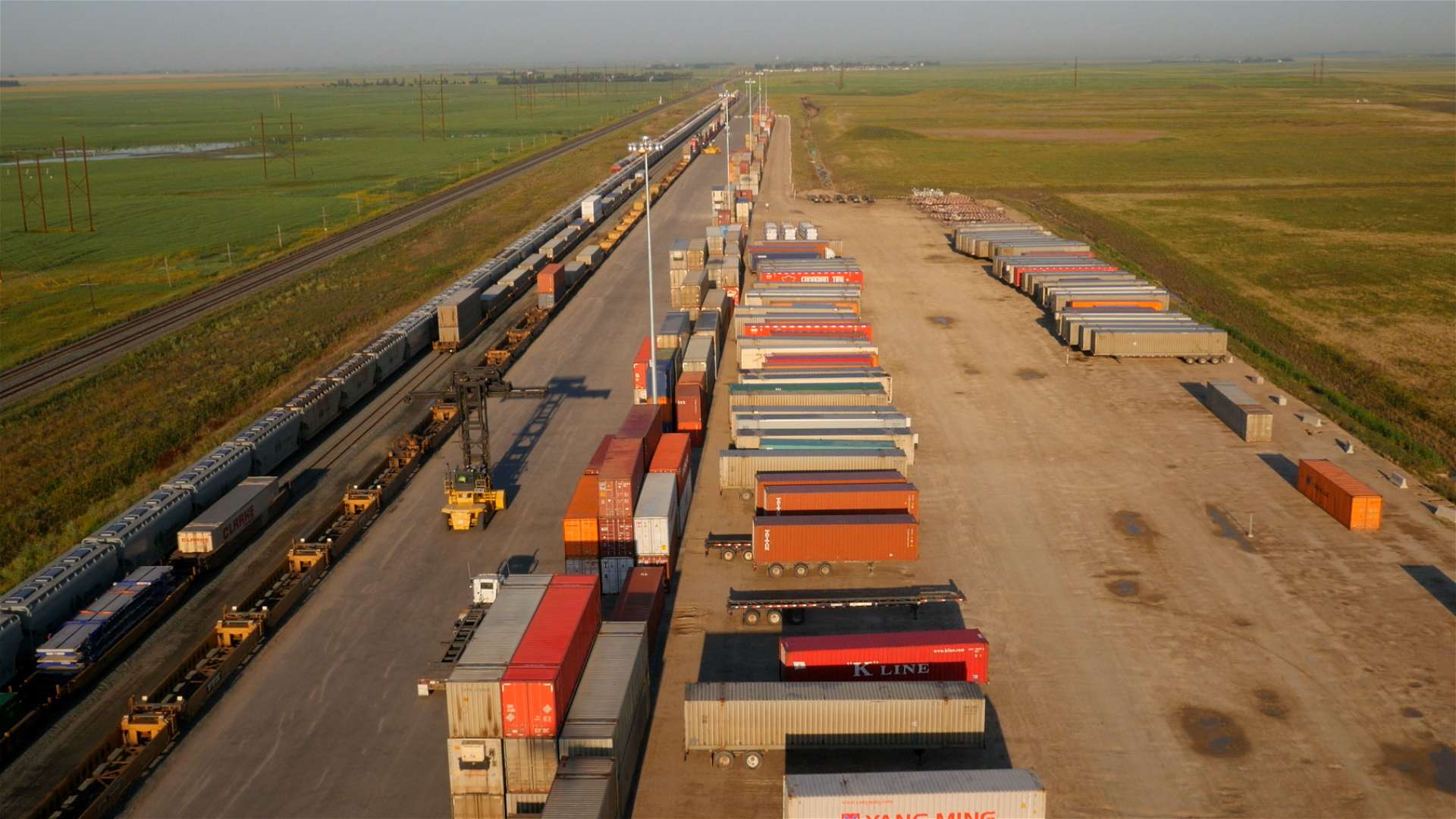A Inland terminal can drive gateway growth. Economist Phil Davies observed, “Total North American Pacific Coast container traffic reached 24.7 million TEU’s in 2014, finally recovering to the peak levels achieved in 2006 and 2007.” “High container traffic volumes are driving demand for well-located logistics oriented industrial land. As there is a shortage of suitable sites on the coast, then the best alternatives are within growing inland terminals,” observed Richard Wozny, principal Site Economic Ltd. This June 2015 BC Shipping News article explores how the development of inland terminals and logistics clusters is an essential driving force in the growth of Canada’s Asia-Pacific Gateway.
Saskatchewan
In Regina Saskatchewan, the Global Transportation Hub (GTH) is the developer, maintainer, and regulator of a greenfield project that is being specially designed for firms in the warehousing, distribution, transportation and logistics sectors. The 1,800-acre facility is located just west of Regina. The GTH integrates important transportation infrastructure such as rail and the national highway system. It provides opportunities for the co-location of distributions centers. GTH’s value proposition was attractive to both Loblaws and Consolidated Fast Freight. Loblaws built a new world-class distribution center to serve Western Canada. In 2013, Consolidated Fastfrate opened a 10,000 square foot cross-dock facility on 10 acres of land.
An essential piece of the logistics infrastructure within the GTH footprint is Canadian Pacific’s intermodal facility. Open since January 2013, CP’s facility is located on a 300-acre industrial parcel owned by the company. The intermodal facility is designed to handle up to 250,000 containers per year, five times more than their previous terminal. To date the GTH and CP Rail’s intermodal terminal are serving the supply chain needs of regional customers that require a variety of international and domestic products – ranging from imported consumer products like electronics, clothing and furniture to auto parts and the export of agricultural specialty crops such as peas, beans, lentils, soya beans and alfalfa that move through the Asia-Pacific Gateway.
Alberta
The industrial real estate sector in Calgary is so far weathering the economic slowdown brought by low oil prices, according to a recent Colliers International report. One of the reasons is that the transportation and logistics sector remains resilient. Supporters of the Calgary logistics cluster would argue that the driving force is low costs for Alberta shippers.
One recent significant development is the construction of a 1 million-square-foot Home Depot distribution hub near the Canadian Pacific Railway intermodal terminal. The project includes a 425,000-square-foot rapid deployment center and adjacent 650,000-square-foot stocking distribution center. The new facilities are slated to open in December 2015 and February 2016, respectively and will serve 58 stores in Alberta, British Columbia, Manitoba, and Saskatchewan.
To support Asia Pacific Gateway traffic, CN has been offering import/export container train service between the Port of Prince Rupert, B.C., and Calgary and Edmonton since 2012. CN’s decision was based on the fact that until recently Alberta had one of the fastest growing industrial and consumer based economies in North America. In response to growth opportunities CN relocated its Calgary intermodal terminal to a new, larger 680-acre logistic park in Rocky View County, near the airport in Calgary. The C$200-million logistics park, along with connectivity to both the Port of Prince Rupert and Vancouver, provides customers with fluid access to world markets for consumer goods and industrial materials, as well as two prime export routes for its forest products, plastics, and agricultural products.
British Columbia
Discussions regarding the location of an inland terminal and logistics solutions in British Columbia often focus on CN’s assets in Prince George. The community’s geographic location provides direct access to both the Port of Prince Rupert and Vancouver for export shippers. The company has an 84,000-square-foot warehouse with 10 acres of outside storage. CN’s adjacent intermodal rail yard features two, 2,400-foot pad tracks, trucking and truck-pick-up capabilities and an automated gate system. In 2012, CN’s Prince George transload facility was expanded to allow regional shippers to take advantage of a facility that is co-located inside their Intermodal yard. Prince George allows for in-park movement of containers, significantly reducing drayage and handling costs for customers.
With an inland port development occurring at Ashcroft Terminals, the increase in choice of logistic service providers will no doubt appeal to some forest products exporters that have traditionally relied on Lower Mainland transload operators. Canaan Group, a global logistics company, announced that they would commence container handling operations and logistics services at Ashcroft Terminal starting in the second quarter of 2015. Partnering with selected shipping carriers, Canaan Group will operate container handling services including, on/off rail, storage, container and truck management, trans-loading, and distribution of products. Customers will have the option to source load their products and return containers back to Ashcroft Terminal to be shipped out by rail or the option to send products directly to Ashcroft Terminal where Canaan will transload to containers. The loaded containers will go back on the railroad to be returned directly to the marine terminals for vessel loading.
Conclusion
British Columbia port’s west coast market share of container traffic has remained surprisingly stagnant even in the face of the difficulties experienced in U.S. west coast ports in 2014. With the full opening of an expanded Panama Canal soon upon us, there will be more intense competition to serve Asia generated container traffic volume from the U.S. Gulf and East Coast ports. Perhaps it is time realize the true direction of our competitive threats.
The debate about what role inland terminals and logistics clusters can play in the supply chain should not solely be limited to shifting growth away from port locations. Rather, discussion and economic analysis of how the total system can be leveraged to grow our container market share, so we remain resilient through the full economic cycle should be an important part of the policy discussion. Increased traffic and logistics resiliency will help support the investments required by marine container terminals and other to support the needs of the next generation of super-sized ships.

